In today’s competitive business landscape, customer alignment is not just a buzzword; it’s a strategic imperative. Aligning your business goals with those of your customers creates a symbiotic relationship that fosters both customer loyalty and business growth. This blog post aims to delve into the nuances of achieving this alignment, offering you a roadmap to mutual success.
From our extensive experience at GB3 | CO, we’ve observed that businesses that prioritize customer alignment retain customers longer and become more resilient to market fluctuations.
The Fundamentals of Strategic Planning
Strategic planning serves as the backbone for achieving customer alignment. It involves setting mutual goals that benefit both your business and your customers. This process is not a one-off event but an ongoing cycle that requires regular review and adjustment.
At GB3 | CO, we believe that strategic planning is the cornerstone of any successful business relationship. It’s not just about meeting quarterly targets; it’s about envisioning a shared future and working collaboratively to achieve it.
Understanding Customer Goals
Understanding your customers’ goals is pivotal for effective alignment. Various methods can be employed to discover these goals, such as customer surveys, interviews, and data analytics. The key is to listen actively and adapt your strategies accordingly.
We’ve found that businesses often overlook the simple act of asking customers what they want. Open communication is crucial for uncovering hidden needs and opportunities for alignment.
Customer Goals Survey Example:
Introduction
Thank you for being a valued customer. We’re committed to continuously improving our products/services to better meet your needs. Please take a few minutes to complete this survey to help us align our goals with yours for mutual success.
Section 1: General Information
1. How long have you been a customer with [Your Company Name]?
o Less than 6 months
o 6 months to 1 year
o 1-3 years
o More than 3 years
2. How often do you use our products/services?
o Daily
o Weekly
o Monthly
o Occasionally
Section 2: Understanding Your Goals
1. What is your primary goal when using our products/services?
o [Open-ended]
2. How well do you think our products/services align with your goals?
o Very well
o Somewhat well
o Neutral
o Somewhat poorly
o Very poorly
3. What additional features or services would help you achieve your goals?
o [Open-ended]
Section 3: Your Broader Business Goals
1. What are your top 3 business goals for this year?
o [Open-ended]
2. How do these goals influence your choice in products/services?
o [Open-ended]
3. Are there any challenges you’re facing in achieving these business goals?
o [Open-ended]
Section 4: Satisfaction and Preferences
1. On a scale of 1-10, how satisfied are you with our products/services?
o [Scale from 1 to 10]
2. What do you like most about our products/services?
o [Open-ended]
3. What areas do you think need improvement?
o [Open-ended]
Section 5: Final Thoughts
1. Do you have any other comments, questions, or concerns?
o [Open-ended]
The Process of Goal Setting
Setting mutual goals is a critical step in achieving customer alignment. These goals should be Specific, Measurable, Achievable, Relevant, and Time-bound (SMART). Setting SMART goals creates a framework that makes the alignment process more structured and achievable.
Example: Strategy Consulting Company & Management Consulting Firm
Let’s consider a Strategy Consulting company with a client, a Management Consulting firm, aiming to grow its business from $1.5 million in revenue to $5 million in the next five years. Here’s how the strategy consulting company can align its services with the client’s ambitious goal:
- Specific: The client’s goal is to increase revenue from $1.5 million to $5 million.
- Measurable: The goal is measurable in terms of revenue figures and a five-year set timeframe.
- Achievable: After an initial assessment, both parties agree that the goal is ambitious but achievable with the right strategies.
- Relevant: The strategy consulting company can offer services like market analysis, business process optimization, and leadership training directly relevant to the client’s goal.
- Time-bound: Both parties agree on a phased approach, setting milestones for each year leading up to the five-year mark.
In our experience at GB3 | CO, aligning with a client’s long-term goals requires a deep understanding of their business model, challenges, and market dynamics. It’s not just about offering services but about becoming a strategic partner contributing to their growth journey.
Action Steps:
- Conduct a SWOT analysis to identify strengths, weaknesses, opportunities, and threats related to the goal.
- Develop a roadmap with key milestones and performance indicators.
- Regularly review progress and adjust strategies as needed.
Bridging the Gap: Strategies for Alignment
Once you understand your customer’s goals and have set your own, the next step is to align them. This involves practical steps and strategies, from product development to customer service improvements.
Real-World Examples of Successful Alignment
- Amazon and Customer-Centricity: Amazon’s mission is to be the Earth’s most customer-centric company. They aligned this goal with customer needs by introducing features like one-click ordering, Amazon Prime, and personalized recommendations. This alignment has made Amazon a go-to platform for various customer needs, driving its business growth.
- Tesla and Sustainability: Tesla aims to accelerate the world’s transition to sustainable energy. They aligned this with customer desires for eco-friendly yet high-performance vehicles. The result? A range of electric cars that not only sell well but also push the entire automotive industry toward sustainability.
- Netflix and User Experience: Netflix aims to offer the best possible entertainment experience. They aligned this goal with customer preferences through algorithms that offer personalized viewing recommendations. This has increased customer engagement and retention, contributing to Netflix’s dominance in the streaming industry.
- GB3 | CO and Management Consulting Firms: At GB3 | CO, we’ve helped management consulting firms scale their operations effectively. We’ve contributed to their journey from being a small enterprise to a multi-million-dollar operation by aligning our strategic planning and business process optimization services with their growth objectives.
One of the most rewarding aspects of our consultancy is witnessing the transformative power of successful alignment. It’s not just about meeting goals; it’s about creating a partnership that drives mutual growth.
The Benefits of Customer Alignment
Customer alignment offers many benefits, including increased customer loyalty and business growth. When your objectives align with your customers, you’re not just selling a product or service but providing a solution that adds value to their lives.
At GB3 | CO, we’ve seen firsthand how customer alignment can turn a transactional relationship into a long-term partnership. It’s a win-win situation where both parties grow together, making the business more resilient and adaptable.
Challenges and Solutions
While the path to customer alignment is rewarding, it’s not without challenges. These can range from internal resistance to change, to difficulties in gathering accurate customer data. However, these challenges are surmountable with the right strategies and mindset.
Common Challenges and Solutions
- Internal Resistance to Change
- Solution: Conduct change management workshops and involve team members in decision-making to gain buy-in.
- Inaccurate Customer Data
- Solution: Invest in robust CRM systems and data analytics tools. Regularly update and clean the data to ensure accuracy.
- Misalignment of Objectives
- Solution: Regular strategy reviews and open communication channels with customers can help realign objectives as needed.
- Resource Constraints
- Solution: Prioritize alignment activities based on ROI and customer importance. Consider outsourcing or automating low-impact tasks.
- Lack of Expertise
- Solution: Invest in training programs or hire experts who can guide the alignment process effectively.
Challenges are inevitable, but they are also opportunities for growth and improvement. In our consulting work at GB3 | CO, we’ve helped businesses overcome these obstacles through tailored strategies focusing on people, processes, and technology.
Conclusion and Action Steps
In summary, customer alignment is not just a strategic advantage; it’s a business imperative in today’s competitive landscape. Achieving this alignment requires a deep understanding of customer goals, strategic planning, and setting mutual objectives. The benefits are manifold, from increased customer loyalty to robust business growth.
As we’ve seen with our clients at GB3 | CO, the journey to customer alignment is transformative. It requires commitment, but the rewards are well worth the effort. Businesses that align with their customers’ goals are better positioned to navigate the complexities of today’s market.
Actionable Steps:
- Conduct a customer survey to understand their goals.
- Review your business objectives to find common ground.
- Set SMART goals that benefit both parties.
- Implement strategies to bridge the gap between business and customer objectives.
- Regularly review and adjust your alignment strategies based on performance metrics.
Questions to Ask Yourself:
- Are your business goals truly aligned with your customers’ aspirations, or are you simply meeting their immediate needs? What could you change today to strengthen that alignment for long-term success?
- Consider a recent challenge in your business. Could it have been mitigated or even avoided by better understanding your customers’ goals and aligning your strategies accordingly? What steps will you take to prevent similar challenges in the future?
- Think about a recent interaction with a dissatisfied customer. How might understanding and aligning with their goals have transformed that experience into a positive one? How will you approach similar situations going forward?
- In your journey toward customer alignment, have you encountered resistance or internal challenges within your organization? What strategies can you employ to overcome these obstacles and ensure alignment remains a priority?
- Imagine your business five years from now, thriving because of perfectly aligned goals with your customers. What specific actions will you take today to work toward that vision?
Additional Seminal Business and Philosophy Books:
- “Made to Stick: Why Some Ideas Survive and Others Die” by Chip Heath and Dan Heath: This book explores the principles behind crafting compelling and memorable messages. It can help readers align their communication strategies with customer goals for more effective engagement.
- “Customer Obsessed: A Whole Company Approach to Delivering Exceptional Customer Experiences” by Eric Berridge: Berridge’s book provides a roadmap for organizations to become customer-obsessed. It offers practical insights into aligning every aspect of a business with customer needs and aspirations.
- “Nudge: Improving Decisions About Health, Wealth, and Happiness” by Richard H. Thaler and Cass R. Sunstein: This book delves into the concept of behavioral economics and how small “nudges” can influence decision-making. Understanding these principles can help businesses better align their offerings with customer preferences.






